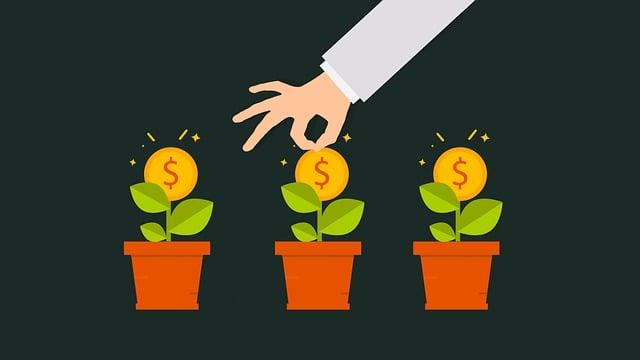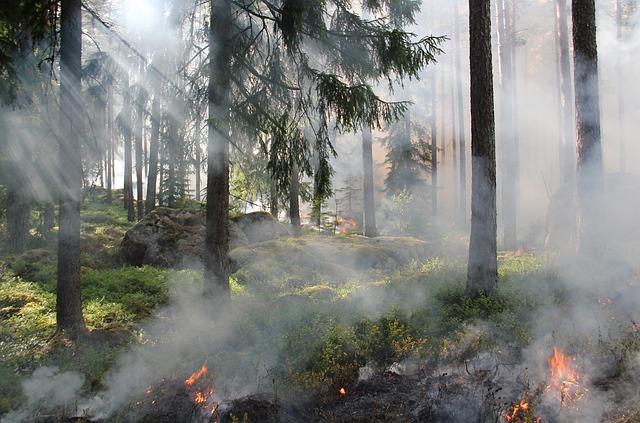- Introduction
- What is a Debt-for-Nature Swap?
- How Does the Coalition Function?
- Economic Impact of Debt-for-Nature Swaps
- Environmental Benefits
- Conclusion
- FAQs
- References
Introduction
Debt-for-Nature Swaps (DNS) have emerged as an innovative solution to tackle two global challenges: environmental degradation and debt crises in developing economies. This article delves into what DNS entails, how coalitions work together to implement these swaps, and the economic and environmental impacts. Additionally, we'll examine a few real-world case studies to provide context.
Debt-for-Nature Swaps can offer a win-win solution where countries struggling with high levels of external debt can reduce the repayment burden while fostering local environmental protection projects. Through DNS Coalitions, governments, NGOs, and international financial institutions unite to balance these complex needs.
We'll explore:
- What exactly a Debt-for-Nature Swap is
- The coalition model that helps drive DNS success
- The wide-reaching economic impact of implementing DNS agreements
- Long-term environmental benefits and their relevance in the current climate crisis
Let’s start by understanding how Debt-for-Nature Swaps work.
What is a Debt-for-Nature Swap?

(Image: Pixabay/@rawpixel)
A Debt-for-Nature Swap (DNS) is a financial arrangement where a portion of a developing nation's foreign debt is forgiven in exchange for local conservation investments. Essentially, creditors, usually developed countries or international organizations, forgive a part of a developing country’s debt in return for that country committing to spending money on environmental conservation initiatives.
This mechanism first came into prominence in the late 1980s, spearheaded by NGOs like Conservation International, and backed by multilateral assistance organizations such as the World Bank and the International Monetary Fund (IMF). Since then, the tool has evolved dramatically from simple bilateral swaps to multi-party agreements involving various stakeholders.
The basic elements of a DNS are:
- Debtor Country: The nation with high levels of foreign debt and valuable biodiversity resources.
- Creditor Entity: Entities can include governments or private lenders, or in some cases, multilateral organizations willing to offer write-downs.
- NGOs: Non-Governmental Organizations facilitate conservation programs which use the funds allocated locally.
The idea is grounded in creating a framework where critical habitats or species are protected, guiding countries towards sustainable development goals while improving financial stability through partial debt relief.
How Does the Coalition Function?

(Image: Pixabay/@TheDigitalWay)
A DNS typically depends on a coalition of multiple stakeholders to ensure successful implementation. These coalitions include governments (both in creditor and debtor roles), international financial institutions like the IMF and World Bank, and conservation-focused NGOs, which often take the lead on the ground.
Why is a coalition important? DNS operations are complex and involve coordination across many fields—financial restructuring, environmental planning, and even socio-political engagement in the countries where swaps occur. Coalitions help streamline the process, providing expertise from multiple perspectives.
Structuring the Swap: First, a country's debt is purchased at a discount on secondary markets if privately held or negotiated directly with government creditors for publicly-held debt. Afterward, new terms are set, contingent on investing the remainder in conservation.
NGO Involvement: Many DNS swaps depend heavily on local and international NGOs for allocating funds appropriately for conservation work. NGOs may also act as monitors of the agreements by ensuring the funds go toward the designated preservation programs within the country.
Verification: Transparency and accountability mechanisms are vital to maintaining coalition efforts. Independent auditors and watchdogs are often appointed to keep track of both the financial and environmental aspects progressing as agreed upon.
Economic Impact of Debt-for-Nature Swaps

(Image: Pixabay/@Mohamed_hassan)
The economic dimensions of Debt-for-Nature Swaps hinge on their ability to address debt while liberating some national finances for conservation and social development programs. The reduction in a nation’s debt load can make substantial fiscal space available for alternative projects.
Boosting Domestic Investment: With a portion of its international obligations lifted, the debtor nation can now channel more capital towards social services, infrastructure, or other sectors. This acts as a powerful economic multiplier, especially in developing nations already grappling with resource dilemmas compounded by stringent debt schedules.
Reduced Risk for International Investors: DNS initiatives can reduce an indebted nation's overall credit risk, making it more attractive for international investors. Debt-for-Nature agreements can also open channels for environmentally conscious investments by positioning the country as a zone for "green" financing opportunities.
Tourism and Ecotourism: In several countries that have participated in DNS arrangements, there has been a substantial rise in eco-tourism revenue. By preserving vast tracts of natural areas, these nations become more appealing to international visitors, bringing in significant foreign currency as tourist dollars hit local economies.
Environmental Benefits

(Image: Pixabay/@Ylvers)
Debt-for-Nature Swaps offer undeniable ecological benefits that resonate globally. Aside from the direct conservation efforts funded by the debt relief, the involvement of NGOs and government bodies helps solidify long-lasting programs focused on ecosystem resilience and biodiversity preservation.
Habitat Preservation: One of the flagship achievements of DNS agreements is the targeted protection of endangered ecosystems, such as tropical rainforests, coral reefs, and wetlands. These areas are essential carbon sinks and biodiversity havens that contribute positively to the fight against climate change.
Reduced Deforestation: Many DNS agreements focus specifically on forested regions. Nations are often able to prioritize anti-deforestation policies, restore previously degraded lands, and introduce sustainable agricultural practices. This assists in mitigating climate-stress impacts in vulnerable areas.
Wildlife Protection: Another vector of DNS programs is wildlife conservation. Countries participating in Debt-for-Nature Swaps frequently earmark funds for protecting endangered species, such as elephants, tigers, or endemic plants dependent on threatened habitats.
Local Community Benefits: Lastly, many DNS agreements incorporate community-centric programs that incentivize sustainable land use and improve livelihoods. Engaging local people in conservation activities ensures long-term success when grassroots buy-in is achieved.
Conclusion
Debt-for-Nature Swaps represent a potent avenue to align financial restructuring with environmental conservation. By engaging broad coalitions of stakeholders, these swaps mitigate a debtor nation's financial obligations while achieving crucial strides in biodiversity preservation and sustainable ecology.
Despite challenges such as measuring true outcomes or navigating the complex legal frameworks of international finance, the essence of DNS remains a hopeful contribution to a sustainable future. Through continued innovation—and commitment to refining coalitions—this tool will likely play an even greater role as nations seek multifaceted solutions to modern global challenges.
FAQs
What is the main purpose of Debt-for-Nature Swaps?
The primary aim of a Debt-for-Nature Swap is to reduce the debt burden of developing nations in exchange for commitments to invest in environmental protection and conservation initiatives.
Who stands to benefit from DNS?
Both debtor and creditor parties stand to benefit. Debtor nations experience reduced debt payments and receive funding for conservation. Creditors gain goodwill, aid reputation, or promote environmental agendas.
Do Debt-for-Nature Swaps work in practice?
Yes, many swaps have been successfully implemented in countries such as Costa Rica, Seychelles, and Madagascar, resulting in positive environmental outcomes and less debt pressure.
How long does a typical DNS agreement last?
Most DNS contracts are designed to be long-term commitments, sometimes lasting up to several decades to ensure permanent conservation outcomes.

